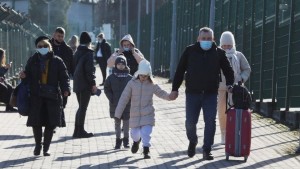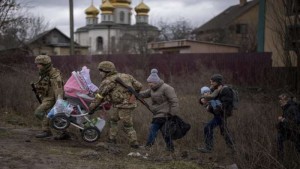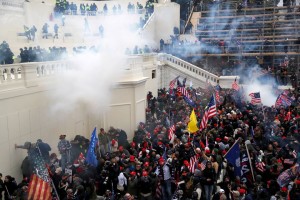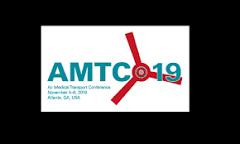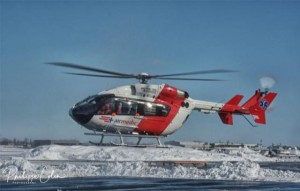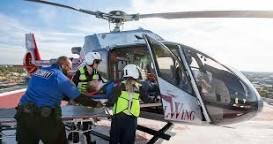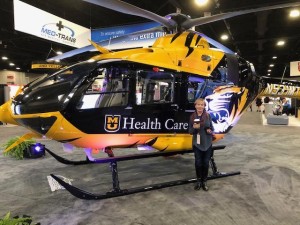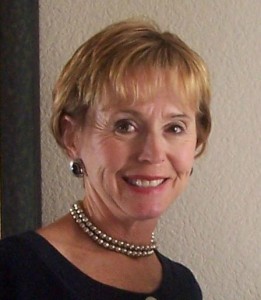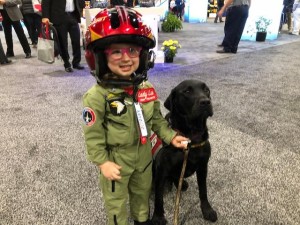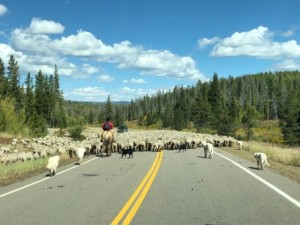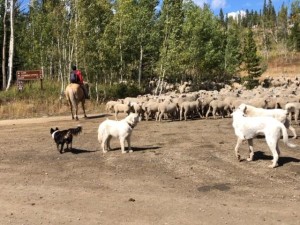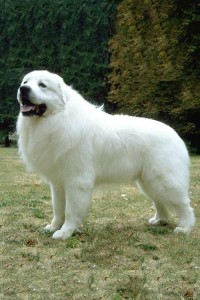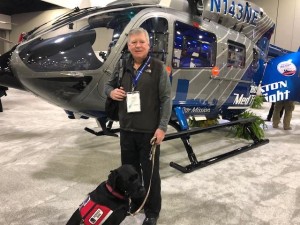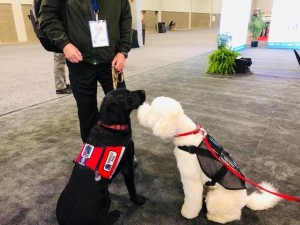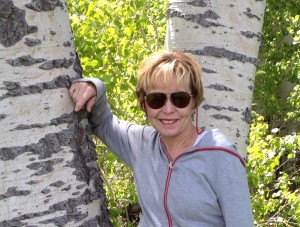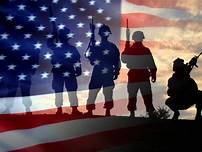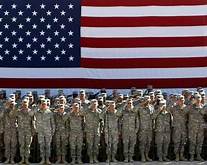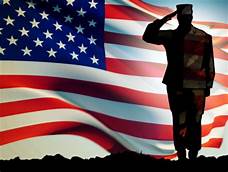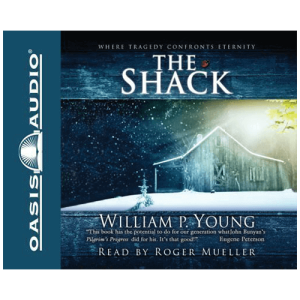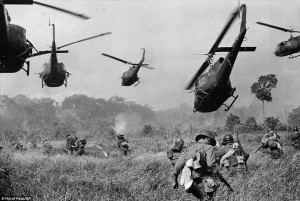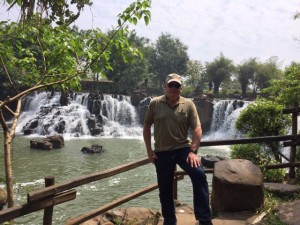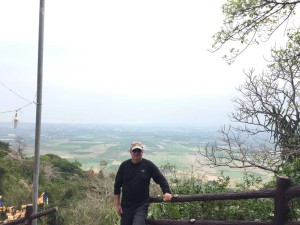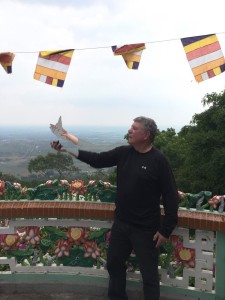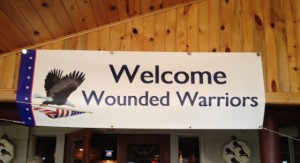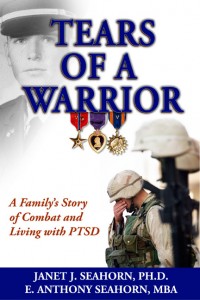Mar
14
WHEN SUNFLOWERS DIE
Filed Under Events, Fear, Freedom, Holocaust, Hope, Military, Peace, PTSD, Soldier, Sunflower, Tears, Tears of a Warrior, Ukraine, United States of America, War | Comments Off on WHEN SUNFLOWERS DIE
-
By Janet J. Seahorn, Ph.D.Did you know that the flower of Ukraine is the sunflower, a flower that symbolizes joy, sunshine and hope? Right now, that special and resilient flower is dying by the hundreds in a land that has tried for several decades to embrace democracy and freedom.The world is watching as Putin, much like Hitler, is moving to expand his power and empire through the death and destruction of the Ukrainian people. He is not just destroying communities; he is destroying the very principles of a democratic state that its people have enjoyed and cherished. They are fighting an overwhelming challenging battle that is testing the very core of so many Ukrainian individuals. Each day I watch in awe of their courage and bravery, and I wonder how many of us in America often take our freedom – our very way of life – for granted.Democracy does not come easily. It is a demanding mistress that requires each of us to search for truth and not merely accept what social media and various news stations and personalities try to make us believe. It necessitates every person to do his/her part to stand up for what is right, what is decent, and what is for the good of our nation. We have only to watch Putin as he controls the airways telling the Russian people only what he wants them to hear, to know.He tells them he is protecting them from a corrupt Ukrainian government and leader. His lies are much like those of Hitler, if he can make his countrymen afraid of something outside of Russia, he can lead them without much internal resistance. His war of destruction makes him even richer, but it is greater power that he most desires. Putin can’t afford to have a democratic country so close to his “kingdom”. It threatens his very existence or at least that is what he believes.We see similar language in our country that provokes hate, spreads lies and ultimately incites distrust among our people. History has shown us time and again, a nation divided can be easily conquered.Unlike Ukraine it will not be outside forces that destroy our democracy; we will implode ourselves from within. Albert Einstein has a profound quote that I keep on my desk every day to remind me of what I need to examine and be brave enough to live; “If I were to remain silent, I’d be guilty of complicity.”As we watch, pray and grieve for the dying sunflowers, let us never forget that we are similarly summoned to strengthen and support our beautiful country least we lose our own freedoms and fragile democracy.
Nov
27
TRAUMA AND FIRST RESPONDERS
Filed Under Courage, Events, First Responders, Healing, Life, PTS, PTSD, Service Dogs, Stress, Tears of a Warrior, Trauma | Comments Off on TRAUMA AND FIRST RESPONDERS
By Janet J. Seahorn, Ph.D.
Two weeks ago Tony, Trooper, and I had the honor of being part of the annual Air Medical Transport Conference (AMTC) in Atlanta, Georgia. This conference was attended by pilots, flight crews, physicians, nurses and first responders from all over the world. The convention was filled with individuals who have given and continue to give much of their lives to saving and helping others. Many have served in the military, and many have been overseas in combat zones. To say they are an inspiration to our communities is an understatement. We were able to meet and talk with several individuals who shared their stories with such humility and purpose dedication. Like our military, these first responders serve their communities with courage and tenacity. They are with others at the most traumatic time of life. They comfort, attend to injuries, and all too many times are the last person a victim sees at the time of death.
I was asked to be the keynote speaker for this amazing group. Of course, my presentation was on trauma and how it affects both our minds, bodies, and spirits. It was the first time a keynote speaker at this event was requested to speak on the topic of trauma and Post-Traumatic Stress (PTS). As in countless organizations, Post-Traumatic Stress is often the elephant in the room that most don’t want to discuss and sometimes even acknowledge. Its presence is seen and felt, yet, little is done to heal and attend to the many traumatic experiences our first responders deal with every day.
To say I was both incredibly nervous and honored to be the keynote is an underestimation of my concerns. I researched, practiced, and prayed for several months prior to the event hoping that the information in the keynote would make a difference to those attending.
I used the analogy of a “sheepdog”. In September we were in Steamboat Springs, CO and watched a mixture of nine Border Collies, Great Pyrenees and Akbash sheepdogs meander behind their one-thousand herd/flock of sheep as they moved from summer range in the National Forest. These dogs are incredibly protective of their herd – keeping the herd together and fighting off predators at the peril of their own lives. They look so normal in their big, furry, white bodies, but make no mistake; they are ferocious in the task of watching over their sheep. Our first responders are like these sheepdogs. They protect, tend to, and put their lives at risk for their communities. The question I raised, just like with our military and veterans, who takes care of the sheepdogs?
As a society, it is our duty to make sure those who take care of us are taken care of as well. They see, hear, touch, smell, and feel events that most of us will never encounter. The burdens they carry are too often only theirs and held in the silence of their minds and hearts. Like our military and veterans many believe that if they are traumatized by their experiences, they are somehow inadequate, less fearless, and not as capable of doing their jobs. This is totally inaccurate. One cannot function in a career of trauma without having some effects on his/her own well-being. In fact, this is what makes them more compassionate and effective at their jobs.
A few statistics I learned while doing my research:
- 34% of first responders have Post-Traumatic Stress;
- Barely half of first responders have had any training into how to deal with their own trauma;
- Much like our military, first responders have a much higher suicide rate than the average population;
- Female critical nurses in ICU and flight nurses are four times more likely to developed ovarian cancer than their peers;
These are just a few of the statistics that should make us all concerned and ready to share the responsibility of taking care of those who take care of us.
Just like our military and veterans – “If we send them, then we MUST mend them.”
KEYNOTE SPEAKER:
Janet J. Seahorn, Ph.D.
Dr. Seahorn has been a classroom teacher and administrator for forty years. She has taught as an adjunct professor for Colorado State University and several universities in the Denver area. For the last ten years she has been teaching a class on Neuroscience and Learning at Colorado State University. Jan has a BA in English/Elementary Ed., an endorsement/license in middle school education and administration, a MA in Gifted and Talented, and a Ph.D. in Human Development and Organizational Systems. Her background includes an in-depth understanding of neuroscience research and effective instructional practices, organizational systems and change. She conducts numerous workshops on the Neuroscience of Learning & Memory Systems and the effects of “at-risk” stress environments on brain development.

Dr. Seahorn co-authored the award-winning book with her husband, Tears of a Warrior: A Family’s Story of Combat and Living With PTSD. The theme focus is on trauma and how it can impact the brain, body, and emotional development of an individual. Much of the research focused on Post-Traumatic Stress (PTS) and understanding how to identify and work with first responders and veterans who have experienced trauma and associated stress. She and her husband Tony work extensively with military personnel, veterans, first responders and families on how trauma impacts the brain. She also works with schools and communities on how trauma experienced in childhood through abuse, neglect, and other environmental conditions impact learning and behavior.
She has written two other books, When Crap Happens Grow Zucchini: A Book on How to Live with Dying and Appreciate the Crap
Foul Wisdom: Identifying the Turkeys and Eagles in your Organization and Life
A third illustrated book on her PTSD poem, Silent Scream, is currently in production.
Dr. Seahorn’s TED Talk on post-traumatic stress can be viewed on You tube: https://www.youtube.com/watch?v=BEHDQeIRTgs&feature=youtu.be
Janet and Tony have two adult sons, Chad and Christopher who enjoy living and working in the Rocky Mountain Region. Tony & Janet share their home with two Black Labradors, Trooper – a certified service dog, and Brody, a puppy being trained as a therapy dog to work in children’s court systems, hospitals, and schools. The family enjoys travel and outdoor activities: history, geography, hiking, fly-fishing, rafting, snow skiing and anything that puts them in touch with nature. Janet also volunteers with several animal shelters in Colorado.
Dec
28
GETTING THROUGH THE HOLIDAY SEASON
Filed Under American Patriotism, Bless Our Troops, Christmas, Events, Family, Happy New Year, Healing, Military, New Year, PTSD, Tears of a Warrior, Troops, Veterans, War | Comments Off on GETTING THROUGH THE HOLIDAY SEASON
Guest post by Lisa Drossert
The following was on one of our friend’s Facebook post. It is very thoughtful advice and may help some of you to get through the holiday season with better understanding of what is going on in some veterans’ mind. Thank you Lisa Drossart for sharing this information.
If you have a Combat Veteran in your family and you don’t like their moods and behavior around the holidays; please consider these six things:
1.) Your combat veteran has served in countries where people are blessed to receive a tattered pair of shoes or have clean water to drink; he/she no longer lives the “first world illusion” and no longer cares that if you buy one play station you can get a second one for fifty percent off. In fact, they find it hard to appreciate any of the gluttonous commercialism and overindulgence that permeates American holidays. Standing watch, boring as it was, had so much more purpose than going to the mall.
2.) Your Combat Veteran is thankful for the most basic things; not thankful for mega-sales and million dollar parades. They are thankful to be alive; thankful to have survived both the wars far away and the wars they struggle with inside.
3.) Your Combat Veteran is thankful that it wasn’t them that got killed, or wishes that it was them that got killed instead, or is torn painfully between the two. Either way, their celebrations are forever complicated by guilt and loss over those that did not come home. Some of the most thankful times in their life (lucky to be alive) were some of the scariest. Their feelings of thanks and celebration often conjure memories that are equally painful.
4.) Your Combat Veteran is not like you anymore. At some point, for some period of time, their entire life boiled down to just three simple things: when will I eat today, when will I sleep today, and who will I have to kill or who will try to kill me today? They are not like you anymore.
5.) Your Combat Veteran does not need a guilt-trip or a lecture; they already feel detached in their grief while others so easily embrace the joy of the season. They need understanding and space; empathy not sympathy.
6.) Your Combat Veteran does love his/her family and is thankful for the many blessings in their life…and they are thankful for you.
Mar
26
GETTING UNSTUCK
Filed Under Black Lions, Combat PTSD, Courage, Events, Faith, Family, Healing, Hope, Journey, Love, Pain, Peace, PTSD, Return To Vietnam, Tears of a Warrior, Veterans, Vietnam Today, War | Comments Off on GETTING UNSTUCK
by Janet J. Seahorn, Ph.D
It isn’t easy to move forward in life when you seem trapped by events that happened in the past. Often times the harder you try to get unstuck, the more bound you become to that very past. So how does one resolve such a dilemma? It probably won’t be without effort, time, and even some painful moments.
In the book/movie, The Shack, the lead character is tormented by an unimaginable personal tragedy. No matter how hard he tries to move forward beyond his pain and horrendous memories, he can’t. Being caught in a terrible incident he is unable to see past his pain to the extent that very little joy or happiness can enter his life. In order to heal he is forced to go back to the place (the shack) where he got stuck; the place where the horror, the anguish, and the future was taken from him.
I think this is what Tony was doing when he decided to return to Vietnam. In order to heal more completely he made a choice to go back to the place where he became stuck, a space that over the last many decades unconsciously became his “shack”. Since his military service in Vietnam he has worked incredibly hard to move beyond the memories and the demons, but there were still times when the burden of combat obscured his vision and ability to live fully. As part of the healing process he had to exhume the old earth in order to plant and allow for new growth to occur. He will be explaining more in his future blogs.
Toward the end of the movie there was a beautiful metaphor about life. A truism that most of us already know…. life is not neat or precisely organized. It is messy, bumpy, and often unbalanced. Yet, it is this very assortment of messiness and disorder that make us who we are and who we can become if we are brave enough to return to our “shack” to become unstuck.
So what is your “shack”? What might you do to become “unstuck: (that doesn’t mean you have to physically return to a specific location to heal). Just know that this “becoming unstuck” will most likely not be easy, orderly, or without some deep potholes. It is a journey, like Tony, you may need to take alone. However, the reality is that you will not be totally on your own. Like Tony you will have the thoughts, prayers, and support of family and friends that will accompany you in spirit and hope.
Jul
12
Angels on the River
Filed Under Events, Fishing Therapy, Healing Waters, Project Healing Waters, Tears, Tears of a Warrior, Trauma, Wounded Warriors | Comments Off on Angels on the River
by Janet J. Seahorn, Ph.D
It was a bright, warm, late June morning. Platte Valley Trout Unlimited and Project Healing Waters were collectivelyhosting their annual Wounded Warrior Event float trip. The two groups embarked on different sections of the river that Thursday. One group of veterans and their guides launched at Bennett Peak while a second group consisting of veterans from the Cheyenne VA Hospital departed from Treasure Island.
The beauty of the river, the challenge and fun trying to land a big trout, and observing the many creatures such as mink, deer, antelope and eagles made the morning special. Roughly an hour and a half into the float from Treasure Islandtragedy struck. A raft with two couples, who were floating on their own, hit a log jam broadside on a hazardous island point in the middle of the river. As their big raft flipped in the treacherous water, all four individuals went into the swift, cold water…only three were thrown clear of the massive log jam.The fourth rafter did not survive the river’s current even though great effort was made to rescue him from the tremendous force of the water.
Yet, throughout this tragedy there were many angels on the river. Angels that surrounded the rescuers, angels that surrounded the survivors to let them know they were not alone, angels that shuttled the traumatized rafters across the river to waiting medical personnel, angels that kept every veteran and their guides safe. Angels in the form of Army National Guard that found the body downstream and encompassed him in their arms letting the person’s spirit know that he was surrounded with love, respect, and comfort.
Yes, there were numerous angels on the river that morning. Angels, that in spite of the tragedy and sadness, provided many blessings. For you see, in the darkness there was still light, in moments of massive despair, hope arose, and in feelings of being alone there were wings surrounding all who needed strength and comfort.
May
2
Warrior’s Journey Home
Filed Under American Patriotism, Combat PTSD, Events, Healing, Journey, PTSD, Tears of a Warrior, Veterans, Warriors Journey Home, Wounded Warriors | Comments Off on Warrior’s Journey Home
by Janet J. Seahorn, Ph.D
Religion does not heal. People heal people. They do it through love, generosity and acceptance. Look. Listen. Heal. Oh so simple yet so difficult to achieve.
For four days we were with a group out of Canton, Ohio who were conducting a conference called the Warrior’s Journey Home. It started with the interesting collaboration of a church pastored by Dr. John Schlup and a Seneca wise woman, Shianne Eagleheart. Through Shianne’s sharing, she taught several members of the congregation the spiritual and physical healing of the Healing Circle. My brother, John, has been a living example of the power of Native American spiritual customs and blessings in Hot Springs, South Dakota.
The purpose of the Healing Circle is to give an individual a safe, nonjudgmental place to be – to listen – to learn and to share his/her trauma experience(s). Sharing is not an expectation like in many traditional therapy groups. It is merely an invitation if one is inclined to disclose his/her words. The sharing is only for those in the circle to hear. Stories must never be disclosed beyond the circle unless given permission by the person speaking.
So here is the really cool part of the sharing, there is a hand carved stick that looks like a walking stick. However, this stick is truly special because the only person who can speak is the person holding the talking stick. There are no time limits a person has to hold the stick and no one can get up and take the stick from that person. When the speaker is through disclosing his story he will place the stick back in its place or hand it to another person.
Oh, and another powerful trait of a Healing Circle is questions are never asked of the speaker. Wow, unlike modern therapy, there is no interrogation, advice, or “extra” comments. One may be given a hug or a small a glass of water by a listening member, but that’s it. By moving through the circle an environment of listening and caring is generated. Perhaps this is why the Healing Circle is such a special experience for veterans.
To make the experience even more powerful a drum and drummers may be present. Shianne’s partner, Bob honored the group with his handmade drum. Healing Circles often begin with native songs and drumming. The beat of the drum mirrors the rhythm of the heart. This mimics the ancient ceremonies meant to simulate a mother’s heartbeat when the warrior was in her womb. It calms the thoughts and anxieties of the attendees, and gives each person a way to begin and end the Circle experience. Like the mystical poet, Rumi, advises, the circle empowers many thoughts:
“What you seek is seeking you.”
“Most people guard against going into the fire, and so end up in it.”
One of my favorite old Chinese proverbs says it all,
“You cannot prevent the birds of sorrow from flying over your head, but you can prevent them from building nests in your hair.”
Jan
13
DREAM WITH ME
Filed Under Dream, Events, Healing, Hope, Life, PTSD, Tears, Tears of a Warrior, Trauma | Comments Off on DREAM WITH ME
by Janet J. Seahorn, Ph.D
It has been a very difficult past few months for many individuals and communities inAmerica. Between Hurricane Sandy destroying property and lives in the northeastern part of our country, to the incomprehensible tragedy in Connecticut. Too often we try to put words to these events, hoping to impart some small bit of insight, but they seem too shallow and futile.
At times, when the heart has felt so much suffering and inhumanity, the soul becomes a vacuum of despair. The challenge remains one of deep spiritual courage. The courage to believe in goodness instead of evil. The courage to awake each morning and keep going, knowing the struggle ahead still exits. And the courage to forgive, to hope, and to still love. Sometimes the best way to convey these staggering emotions is through music. For this reason I thought a song by the young singer, Jackie Evancho, may convey a message of hope for a New Year – far better than simply words.
In my imagination I see a right world
where everybody lives in peace and honesty
I dream of souls always free
like clouds which fly
full of humanity deep inside
In my imagination I see a clear world
the night is less dark over there
I dream of souls always free
like clouds which fly full of humanity
In the imagination there is a hot wind
which blows on cities, as a friend
I dream of souls always free
like clouds which fly
full of humanity deep inside
www.youtube.com/watch?v=HQF-l9NBtX8
In this coming New Year, may the words from Nella Fantasia come true.
So, Dream With Me.
Apr
17
CAN YOU HEAR ME NOW?
Filed Under Aging, Brain Injury, Combat PTSD, Events, TBI & PTSD, Tears of a Warrior | Comments Off on CAN YOU HEAR ME NOW?
by Tony Seahorn
Every once in a while we get presented with a special opportunity that may change or at least have an impression on our lives. This happened to me a few weeks back. I was asked to be a member of a panel of veterans who had hearing loss and tinnitus due to combat exposure. The panel was part of the National Joint Defense Veterans Audiology Conference (JDVAC) which is held around the country each year. This year’s event was held at the Omni Hotel in Dallas,Texas.
Of the six veterans participating on the panel, all of us also had PTSD and a couple with TBI. We all agreed that most veterans with severe hearing loss have other scars from war that often add to the severity of individual disabilities.
From the time we arrived we were treated like royalty: beautiful rooms, a basket of goodies delivery shortly after we arrived, and even free coffee and lattes. Unfortunately, Jan was unable to go with me due to her teaching commitments at CSU. I’m not sure whether she was most jealous of the basket of goodies or all the free lattes she could have during my three days at the conference.
Maybe I should backtrack a bit. Ever sinceVietnamI have struggled with tinnitus, ringing in my ears. For the most part I have been able to endure the buzzing in my ears, that is until last November. One night I went to bed with the “normal” ringing. However, in the morning I awoke with the sound being far worse than ever and I had lost most of my hearing in my right ear. My hearing loss was also accompanied by dizziness.
After several doctor visits and antibiotics, I was told that the ringing would probably never get much better and my hearing would not fully return. Fast forward a few months and this special opportunity to be a part of a conference with some of the best hearing specialists in the country.
My panel was made up of eight individuals: two audiologists and six veterans. Each panel member contributed, not just telling their combat story, but how being hearing challenged impacted their lives. The entire session was taped and will be presented in a video and streamed on the sponsor Hamilton CapTel® Web site which will reach hundreds if not thousands of viewers throughout their network.
Following the conference, one veteran wrote in an e-mail …Our feeling is that we have to start somewhere with this important message. Hopefully, as we look back at our endeavors a year from now, we’ll see encouraging progress that not only includes larger veteran audiences for this panel at industry events – but more importantly, increasingly open “solutions” dialog between hearing health care professionals and the veterans they serve.
For all of you vets who are living with a hearing problem, I truly believe help and hope is on the way. I found that support and optimism in Dallas. The experience has been such a blessing. To think I almost didn’t attend this event.
Following is a message from Judi Victor in her capacity of Panel Director:
Hi, JDVAC Holistic Panel Team!
Tina and I are having trouble finding the right words to thank you for your participation in the Holistic Hearing Healthcare Panel at JDVC on Tuesday. Each of you contributed so much to the discussion; we can’t imagine a more articulate, informed, bright or inspiring group. It was, indeed, impressive – and to think that the entire panel had never rehearsed together until a few hours before the actual event is truly amazing!
Even though our “live” audience was not gigantic, please keep in mind that we are editing the video presentation to stream on the Hamilton CapTel® Web site, which will reach hundreds if not thousands of viewers. In addition, the video will be shown in part or in its entirety at other industry events throughout the coming year.
Our feeling is that we have to start somewhere with this important message. Hopefully, as we look back at our endeavors a year from now, we’ll see encouraging progress that not only includes larger veteran audiences for this panel at industry events – but more importantly, increasingly open “solutions” dialog between hearing health care professionals and the veterans they serve.
We know that this event required a huge effort on your parts, not to mention the fact that it took you away from your work, families and many other activities. Please know that your participation is appreciated more than we can ever express.
With warmest regards and deepest gratitude.
Mar
15
“Tears of a Warrior” eBook
Filed Under eBook, Events, PTSD, Tears of a Warrior, Today's War | Comments Off on “Tears of a Warrior” eBook
by Tony & Janet Seahorn
Nov
14
FROM A DREAM TO REALITY
Filed Under American Patriotism, Events, Healing, Tears of a Warrior, Veteran's Day, Veterans Plaza | Comments Off on FROM A DREAM TO REALITY
by Tony & Janet Seahorn
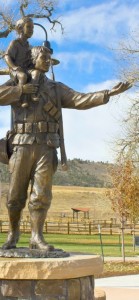
It is Sunday afternoon, and the end of a long and humbling Veteran’s Day week. The weather changes quickly from wind, to clouds, to warm sunshine and finally a few drizzles. It seems to be mirroring the lives of many of the individuals attending the opening dedication of the Northern Colorado Veteran’s Plaza. Most of the attendees are veterans spanning several generations of war. They, like the day’s weather, have lived with the clouds of battle, the warmth of joy, and at times a torrent of tears.
Those tears were the beginning of the dedication. The bridge which transports people from the main roadway into the park, now home to the new Veteran’s Plaza, was consecrated as Sergeant Nick Walsh Way. Sergeant Walsh died in Iraq in 2007. His parents, family, and fellow Marines watched as the new signage was unveiled; it was evident that the Price of Freedom has to be incredibly steep for those who serve along with their families who sacrifice along with them. Perhaps the bridge will serve as a reminder of hope – a transition from sorrow to comfort and from death to strength.
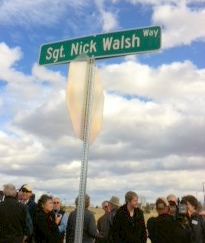
The Veteran’s Plaza is not a memorial to those who died. No, this sacred ground extends far beyond a loss. The Plaza will serve as a reminder of unselfish sacrifice and courage. It is a place where present and future generations can go to reflect on the courage of others and learn from their past. The garden is filled with soils from battlegrounds throughout our history: Iwo Jima, Normandy, Vietnam, Iraq, and Afghanistan… This special earth, once stained from the carnage of different wars, now supports the plants that flourish showing us again that biblical saying, “from death into life”.
Now, for the best part of this story — the Veteran’s Plaza was the dream of one man, Major Diggs Brown, a Special Forces Veteran living in Fort Collins, CO. He was inspired to make a difference after attending the funeral of Sergeant Walsh.
Soon thereafter, he gathered community members, veterans and numerous organizations and created a “Plaza” committee. The group worked tirelessly for two years, soliciting donations, holding fundraisers, brainstorming and promoting the vision.

Today was a testimony to what an idea can become with planning, hard work, creativity, and most of all, a Dream.




